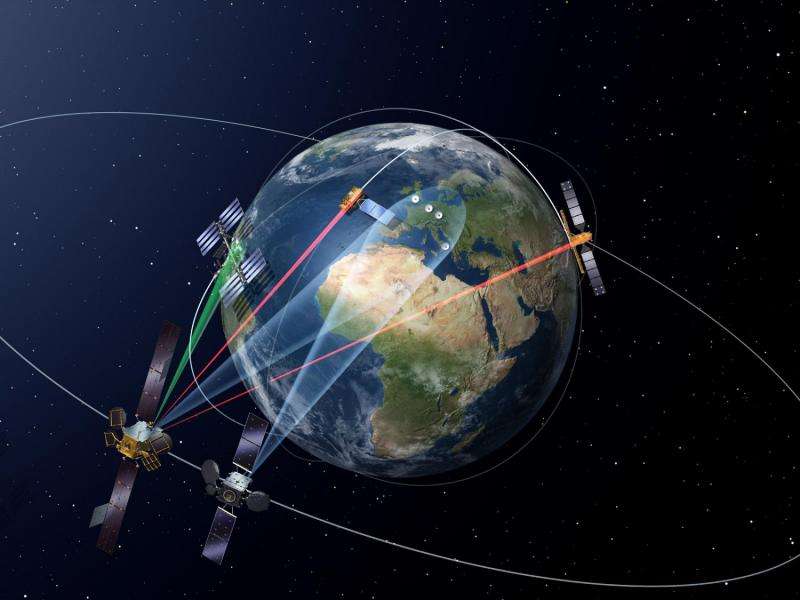Counting down: First SpaceDataHighway laser node set for launch

The first node of the European Data Relay System will be launched on 29 January from Baikonur, Kazakhstan.
EDRS is one of a kind and ESA's most ambitious telecom programme to date, creating the means for an entirely new market in commercial satellite communications.
Dubbed the 'SpaceDataHighway', EDRS will uniquely provide near-realtime Big Data relay services using cutting-edge laser technology. It will dramatically improve access to time-critical data, aiding disaster response by emergency services and maritime surveillance, for example.
Airbus Defence and Space are ESA's programme partner and operator of the service. The first node, called EDRS-A, will begin relaying information this summer from its first customers: the ESA/European Commission Copernicus Sentinel-1 and -2 satellites.
From that point on, ESA and Airbus will use the first and future EDRS nodes to increase the time low-orbiting satellites, the International Space Station and unmanned aircraft can send data to Earth from intermittent to near-continuous, opening up a wealth of new possibilities.
Once fully deployed, EDRS will relay up to 50 terabytes of data from space to Earth every day. It will eliminate the downlink delay currently prohibiting immediate access to satellite information and phase out Europe's reliance on foreign ground stations.
EDRS-A will be launched as a hosted payload on the Eutelsat-9B satellite on 29 January at 22.20 GMT (23:20 CET, 04:20 30 January local time) on a Proton rocket, with satellite separation around 9 hours later. In-orbit tests will begin on the EDRS laser payload three weeks later. The payloads were built by Airbus subsidiary TESAT-Spacecom and funded by the DLR German Aerospace Center Space Administration.
More information: www.esa.int/EDRS
Provided by European Space Agency





















